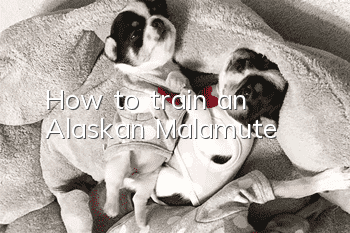Is the Nova Scotia Duck Hunting Retriever easy to raise and how to train it | Pictures | Price

The Nova Scotia Duck Hunting Hound is native to the New Scotland Islands in southern Canada. It is a medium-sized dog in appearance and has a well-proportioned and compact overall structure. This dog has strong muscles and strong bones. It was originally a hunting dog used to catch ducks and geese. During the seasonal migration, it would imitate a red fox and jump around on the shore wagging its tail. After arousing the curiosity of the ducks, the hunter would hide in the dark and take the opportunity to catch him. to the duck. This kind of dog will become very excited and highly focused when working.
1. Characteristics of Nova Scotia duck hunting retrievers
(1)Appearance characteristics
Body size - Nova Scotia Duck Hunting Retriever adult male dogs have a shoulder height of 48cm-51cm and a weight of 20kg-23kg; Nova Scotia Duck Hunting Retriever adult female dogs have a shoulder height of 45cm-48cm and a weight of 17kg-20kg. The overall body structure is compact and harmonious, with good bones and body flexibility.
Head - The eyes of the Nova Scotia Duck Hunting Retriever are relatively far set, almond-shaped, medium-sized, amber to brown. The eyes express friendliness, intelligence, and vigilance. The same color around the eyes as around the lips. The ears of the Nova Scotia Duck Hunting Retriever are medium-sized, triangular in shape, set high, and have short hair on the ears. The entire head has a clear outline and is slightly wedge-shaped. The skull is broad, the occipital bone is not prominent, and the length of the head is approximately 23cm. The teeth have a good bite, with straight teeth and strong upper and lower jaws.
Trunk - The Nova Scotia Duck Hunting Hound has a flat topline, a slightly short straight back, and well-developed waist muscles. Chest deep to the elbows, ribs well sprung, flat and elastic. The abdomen is slightly lifted. The tail of the Nova Scotia Duck Hunting Hound is somewhat slanted and very strong. The gorgeous and thick feathers connect perfectly with the spine. When alert, the tail position is very low. When moving, the tail is curved and does not touch the body. Contact each other. The Nova Scotia Duck Hunting Retriever has straight, strong bones, with muscular shoulders that are slightly sloping, with elbows close to the body and turning neither in nor out. The hindquarters are muscular and broad, the thighs are well muscled, and the hocks turn neither in nor out.
Coat - The Nova Scotia Duck Hunting Retriever's back coat is waterproof, medium length, rich, dense and soft, with two layers of back hair. The back hair has a slight wavy curl. The upper layer of back hair forms a good protection for the skin, and the lower layer of back hair has a good thermal insulation effect. The color of the back hair is red, orange, and orange can have various shades. There are usually some white markings on the tail tip, feet, and chest.
(2)Characteristics
The Nova Scotia duck hunting retriever is very smart. It has a good attitude at work and will devote itself to completing its work. It has a relatively high IQ and strong endurance, and is suitable for long-term hunting activities. The physique is very strong, andWill sleep in the wild without fear of severe cold.
2. Price of duck hunting retriever in Nova Scotia
Nova Scotia duck hunting retrievers are not very expensive. You can buy one for about 1,000 yuan to 3,000 yuan. A smart dog with a relatively high IQ is not suitable to be raised at home and needs a larger space to feed it to meet its daily exercise needs.
3. Nova Scotia Duck Hunting Hound Training
Excretion training - defecation training should be carried out when puppies are young to develop this awareness. Put it where it should go and reward it with food after defecation. If you don't find the right place, scold it to make it realize that this is wrong and will not make the owner happy. After a few times, it will develop this habit.
Eating training - a fixed place, let it know that it can only eat in this place. A fixed amount of food stimulates the dog's appetite, ensuring that he has a good appetite every time and is only seven to eight times full. Set a fixed eating time and take away the plate when the time is exceeded to allow the dog to eat at a correct speed. This will not make the dog feel anorexic. Develop the habit of eating at fixed points, quantitative amounts, and at regular intervals.
Password training - To help the dog better understand the command movements, use the shortest sentences and the clearest pronunciation, and do not say them repeatedly. When speaking the command, do not speak loudly or in an angry tone. Different dogs speak commands in different tones. Depends on the dog’s personality.
4. How to raise a duck hunting retriever in Nova Scotia
The Nova Scotia Duck Hunting Retriever is a small and medium-sized long-haired dog that requires a little more care. The coat of the Nova Scotia duck hunting retriever is wavy and curly. Just use a coarse-bristled brush to clean the dirt on the coat. Grooming the dog's hair every day and doing daily cleaning and hygiene work are prerequisites for ensuring the dog's health. You should take your dog to the pet hospital for a comprehensive physical examination every month. In terms of food selection, puppies should eat small amounts and eat frequently, and adult dogs should eat large amounts and eat small amounts. Pay attention to the amount of exercise after meals, and give your dog some pet-specific snacks.
Guess you like it
Xiba dog, Taihang dog, Tatar dog, ancient terrier dog, Tosa dog
- Can dogs with canine distemper be cured? Is it contagious?
- Why does Alaska have stinky feet? What causes them?
- What are the training techniques for Shiba Inu?
- Can dogs drink Huoxiang Zhengqi water?
- What do you need to prepare your Husky for a bath? How many steps does taking a bath have?
- What to do if your dog has rhinitis
- Reasons why Labradors are obese
- What are the symptoms of a severely frightened dog?
- How to raise an ancient shepherd dog
- Do Chuanchuan dogs only recognize one owner?



